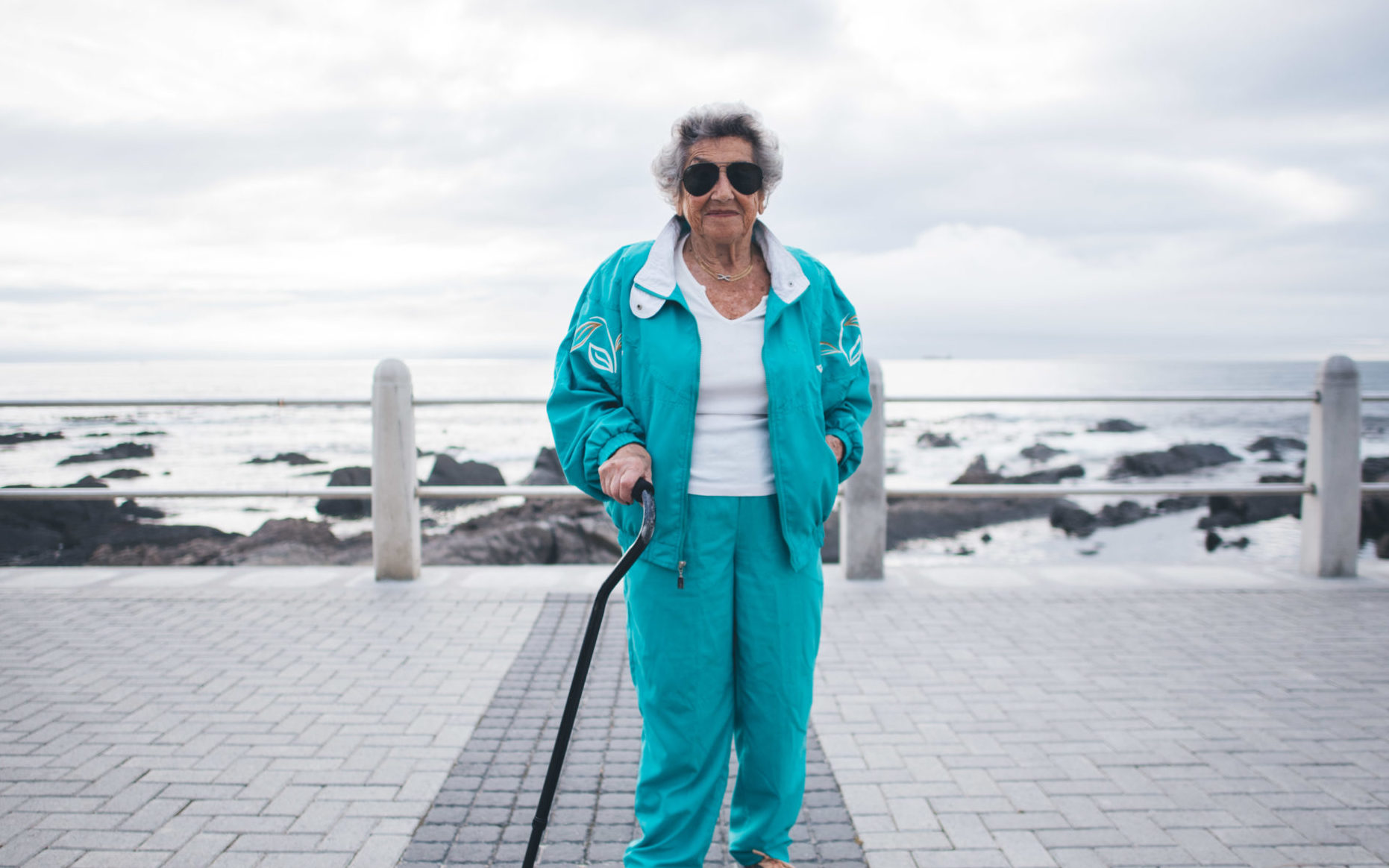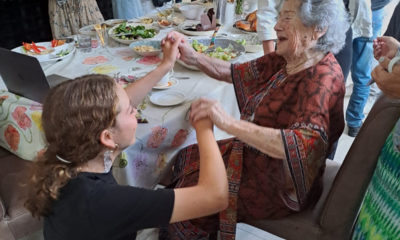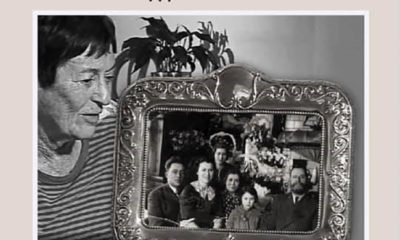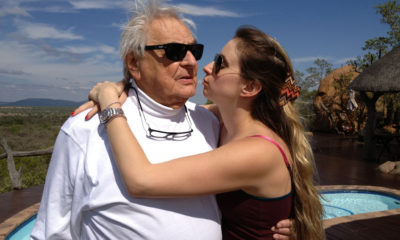
Community

South Africa’s “Jewish Mandela” on life and rebirth
The oldest South African Holocaust survivor, Ella Blumenthal, turns 100 this Shabbat, the day after I Am Here, the award-winning documentary made about her life, has its first showing at the Durban Film Festival.
Nonetheless, Blumenthal who lives in Cape Town, will begin her Friday with her usual routine of catching up on emails, Facebook, and Instagram before calling her family overseas on FaceTime. Due to COVID-19, she will be spending Shabbat with her immediate family.
“A few shuls have arranged a pre and post-Shabbat Zoom session for my birthday,” she said. “On Sunday, I will have a Zoom call with my entire family from around the world.”
Speaking to the SA Jewish Report on Mandela Day on 18 July, Blumenthal said about former President Nelson Mandela, who died aged 95, “I didn’t have the privilege of meeting the great man. I’m in awe of his values, love of all people, and his ability to forgive.”
However, the similarities between these two memorable humans isn’t lost on those who know her. Said Jordy Sank, the director of I Am Here, “I can see so many similarities between him and Ella. They are both incredible examples of people who chose love and understanding over hate, and their life’s purpose is to spread positivity to everyone around them.”
They are both born around Shabbat Nachamu (Comforting), the sabbath after Tisha B’Av.
Both were destined to live long lives. Former Western Cape Premier Helen Zille praised both of them in her autobiography. In addition, Blumenthal travelled to Paris shortly after her liberation. After Paris she travelled to Palestine, where she met her husband Isaac Blumenthal in 1948 (pre the state of Israel). Less than four months after his release from prison, Mandela paid a two-day visit to Paris. There, he was joined by his second wife, Winnie Madikizela-Mandela. Further, the name “Evelyn” is shared by Mandela’s first wife, and one of Blumenthal’s children.
Blumenthal and Mandela are also linked by the number three. The former spent time at the Majdanek, Auschwitz, and Bergen-Belsen concentration camps, and Mandela’s 27 years in prison were split between Robben Island, Pollsmoor Prison, and Victor Verster Prison.
Like Mandela, who was a keen swimmer in his youth, Blumenthal enjoyed swimming as a girl growing up in Warsaw.
Today, Blumenthal said, “I used to swim at the Virgin Active every morning, except Shabbat, doing 18 lengths. I also used to walk along the promenade outside my flat every afternoon. But since COVID-19, I’ve been staying with my daughter in Camps Bay, and have to be content with short walks every day.” Mandela, too, was an avid walker.
In I Am Here, the witty, bubbly, and a larger-than-life Blumenthal is represented as having an aura similar to the “Madiba magic”.
Her zest for life comes through in the life-affirming documentary, which won the Audience Award for Best Documentary at the Atlanta Jewish Film Festival and is backed by the Claims Conference, which has supported many award-winning films, such as Hungarian Holocaust film Son of Saul.
At her 98th birthday celebration, Blumenthal opened up to close friends and family about her story of survival during the Holocaust in a way she had never done before. Her recollections, including tales of narrowly escaping death in a gas chamber and other harrowing incidents, put South Africa’s current challenges of COVID-19 and looting into perspective.
Along with uplifting stories, like dissuading her niece from ending her life and being saved by a nurse – her childhood friend – the immensely rewatchable film includes animation juxtaposed with present-day footage of Blumenthal performing her weekly spiritual rituals.
With antisemitism and Holocaust denial rife around the world, I Am Here and the new animated Where is Anne Frank couldn’t have come at a better time.
Asked about the symbolism of the blue butterfly, an animated visual that appears throughout I Am Here, Sank said, “The blue butterfly symbolises the Jewish people, hope, faith, and so much more. I often like to let people gather their own interpretation of what it means, but as a filmmaker, it was a visual way of us communicating Ella’s spirit and faith.”
Said Gabriella Blumberg, the producer of I Am Here, “Ella, leading by example, shows us how to truly take time to appreciate each day, and notice the good that exists in the present. Her remarkable resilience in spite of all she has been through makes her a role model to us all.”
Said Sank, “I’m sure that for Ella, seeing the sheer devastation and upheaval that took place during the lootings was reminiscent of her time during the war. But I just know that she would pray for peace and for a speedy resolution.
“Ella is always able to see the silver lining in any situation, even COVID-19. I heard once that someone was complaining to Ella about how they were feeling during lockdown, and Ella was concentrating on the sunset and told them that we have so much to be grateful for.”
Blumenthal’s advice to those who are struggling is to “never give up and be positive. Know that the dark days will be over soon, and that the sun will shine again for all of us. We are here!”
- Book to watch the virtual screening of ‘I Am Here’ at the Durban International Film Festival from 23 July to 1 August. Tickets are free. https://www.durbanfilmfest.com/film/i-am-here/











Chaim
September 28, 2021 at 10:40 am
Great lady but a bit of a stretch comparing her to Mandela. Really.